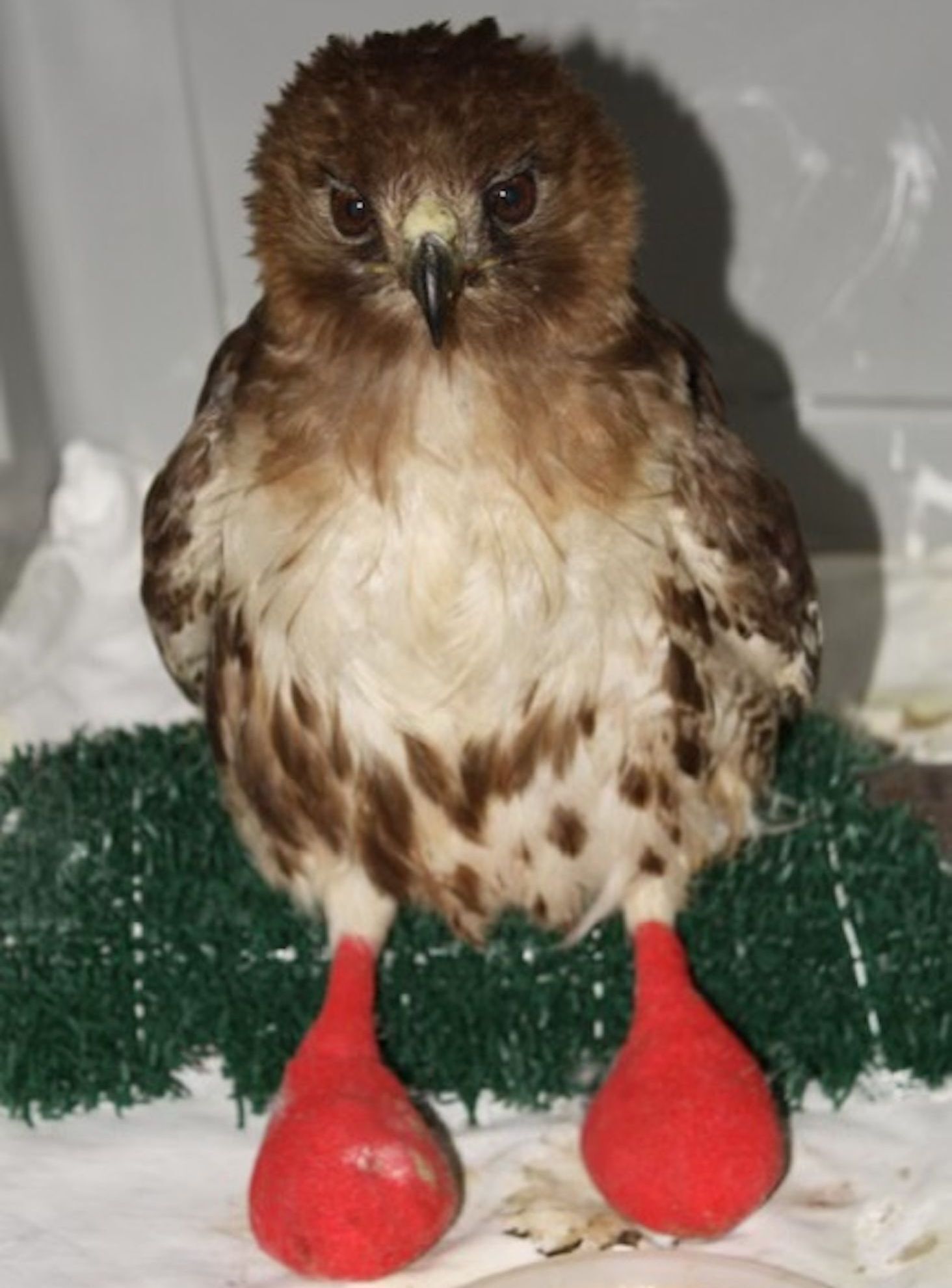
What is Wildlife Rehabilitation?
Wildlife rehabilitation is the process of providing aid to injured, sick, or orphaned wild animals with the goal of releasing them back into the wild where they can thrive on their own. Owl Moon Raptor Center admits over 500 raptors each year to our center for rehabilitation.
Unlike cats and dogs, wild animals need specialized care by licensed individuals like rehabilitators and veterinarians who specialize in in wildlife. Proper care is taken to ensure the animal has minimal human interaction to keep stress levels as low as possible during treatment.
What happens first?
When a raptor comes into Owl Moon for aid, rehabilitators first assess the patient to determine what is wrong. First the patient is admitted and then radiographs, bloodwork and eye exams are performed to determine the best course of care. A treatment plan is developed for each patient and reassessed throughout the rehabilitation process.
What are mews?
Once a patient has healed, Owl Moon moves the bird to enclosures called “mews” where they can start flying again in an enclosed space. The next step is to recondition the bird so when they are released, they can start hunting immediately without trouble. To do this, they are attached to a creance line and flown over certain distances to get back into condition. This is done often until the bird is ready to be released.
What is Imping?
Even with the special care that rehabilitators take to ensure our patients experience as minimal stress as possible, some patients still break feathers during convalescence. Raptors usually molt once a year during the spring/summertime, and to avoid having to wait for a molt to release the bird, Owl Moon employs a very old falconry practice called “imping” that uses feathers from patients who were not able to be rehabilitated and replaces the existing broken feathers with new unbroken ones. The result is a bird ready for release with feathers that are in good condition and will last until the bird molts on its own.
Can every bird be saved?
One challenge with raptors is that they must be in nearly perfect condition to be rreleased back into the wild. Unfortunately, sometimes a bird comes in with injuries that are too severe to allow for rehabilitation. In those cases, we will work with licensed facilities to take birds that are not releasable but are pain free and have the right temperament for education. However sometimes a bird’s injuries are so severe they would end up living in pain with no quality of life for the remainder of their lives. In those cases, euthanasia is the most humane option. The process is stress and pain free.
